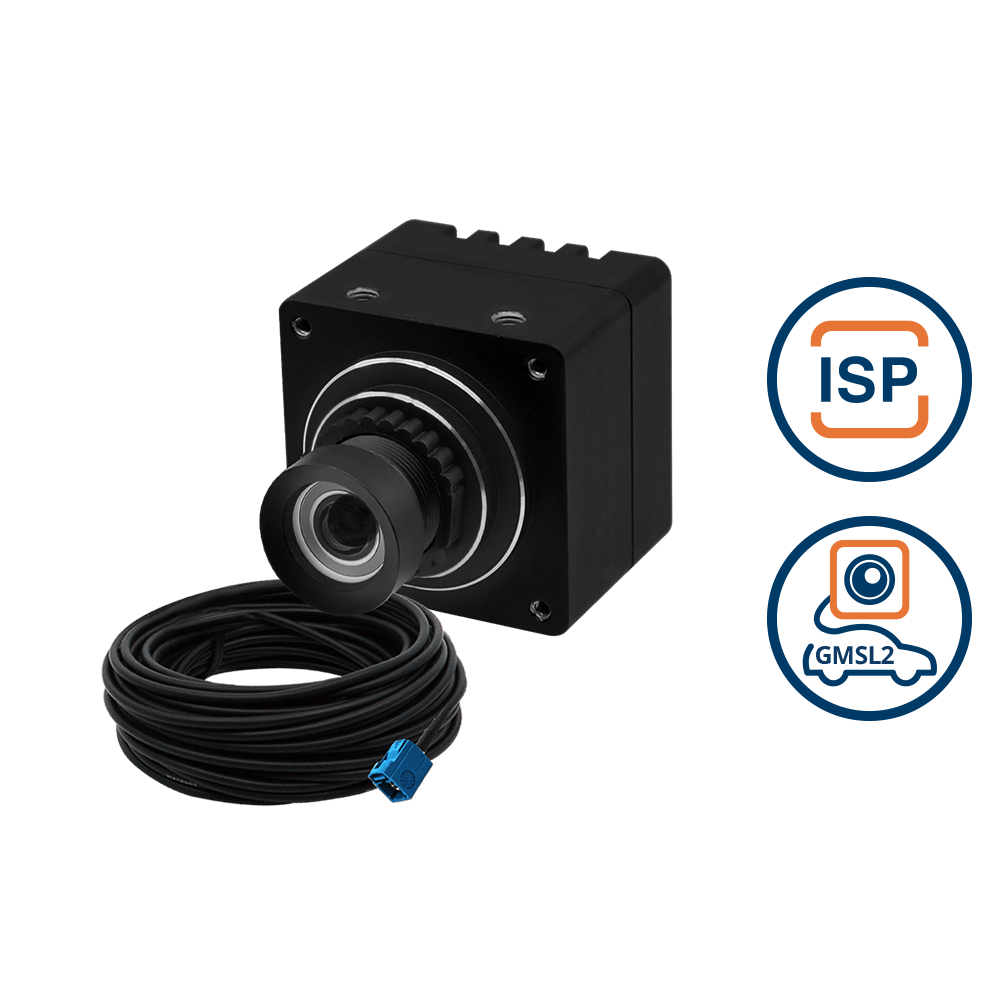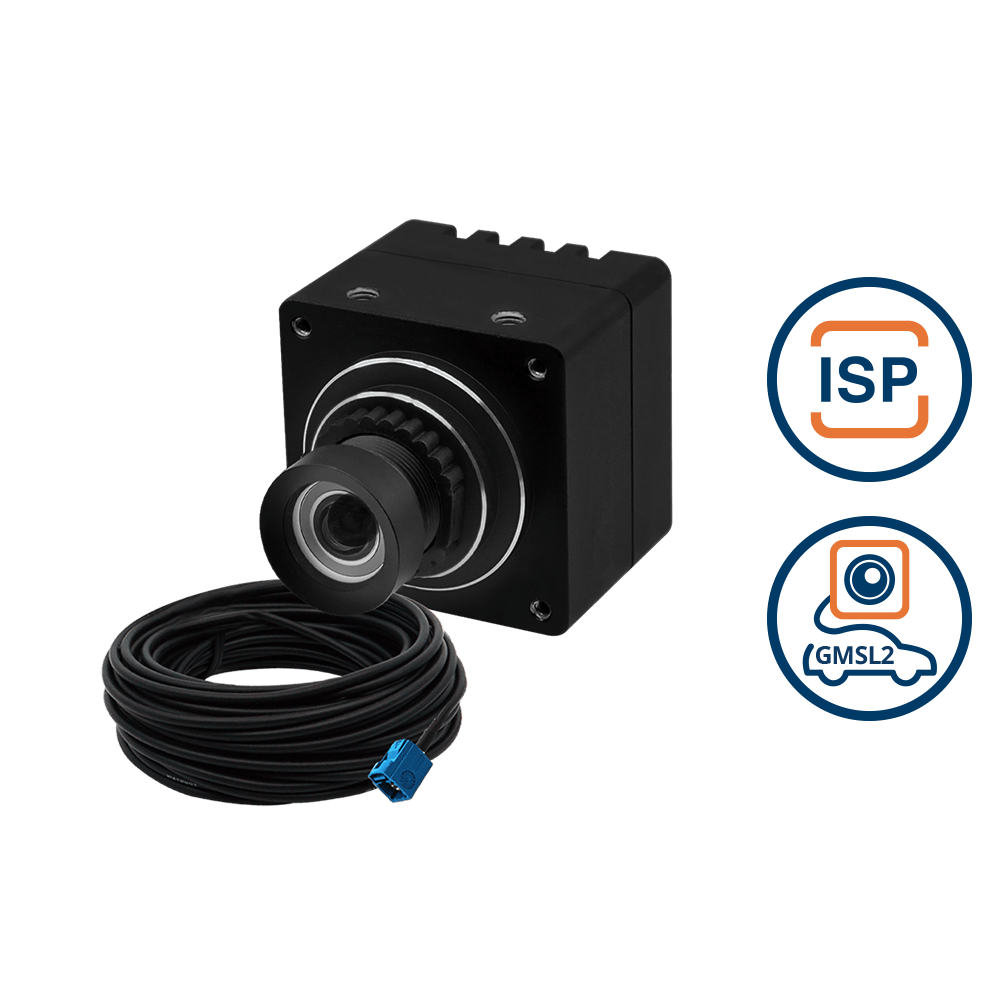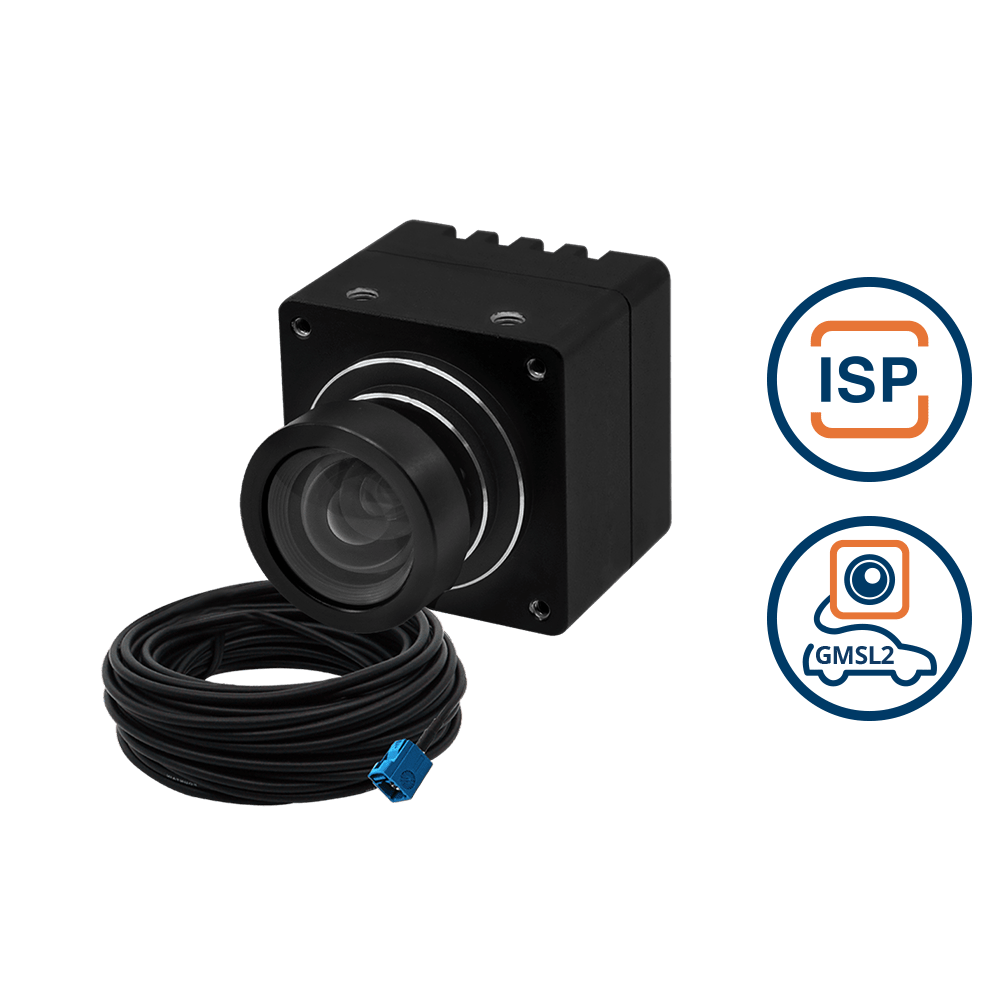Do you remember the sleek, self-driving cars in Minority Report? Or the AI-powered vehicles from Black Panther’s Wakandan tech? These on-screen marvels aren’t as far-fetched as they seemed a decade ago. Autonomous vehicles (AVs) are steadily turning science fiction into everyday reality, with advanced camera systems leading the charge.
But unlike Hollywood’s flawless depictions, real-world AVs face the challenge of perceiving and reacting to their surroundings with millisecond precision in ever-changing conditions.
Enter GMSL2 (Gigabit Multimedia Serial Link 2) cameras. The unsung hero of autonomous vehicles. These cameras aren’t just high-tech gadgets. They’re critical components enabling AVs to capture, process, and transmit vast amounts of image data in real-time. From identifying hazards to ensuring smooth navigation, GMSL2 cameras empower AVs to “see” like never before.
This article looks at how GMSL2 cameras are transforming autonomous vehicles into safe, efficient, and intelligent machines.
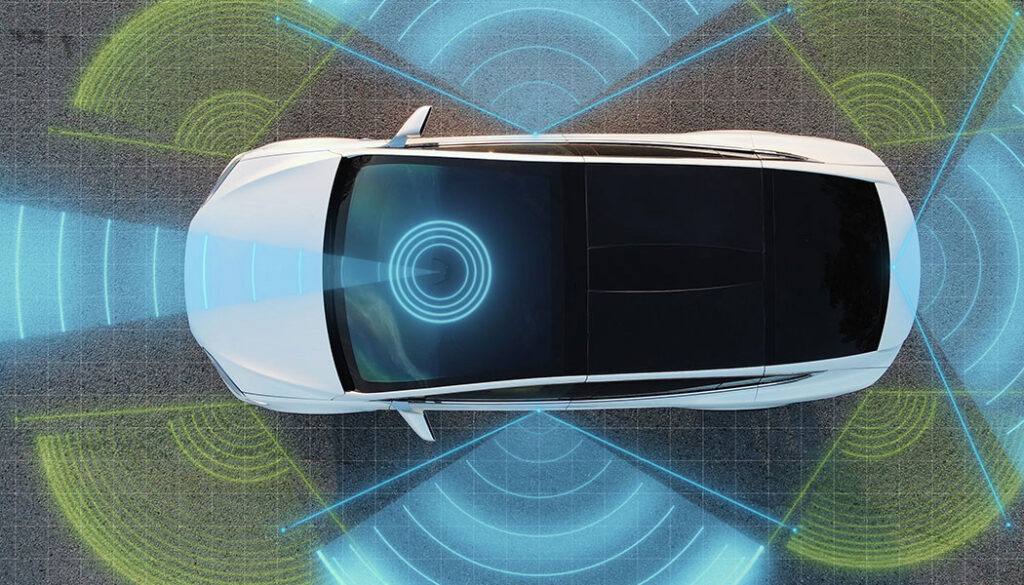
Understanding GMSL2 Technology
GMSL2 is a next-generation interface technology developed by Maxim Integrated (now part of Analog Devices) that is capable of transmitting video, audio, and control data seamlessly over a single coaxial or shielded twisted-pair cable (up to a distance of 15 meters). Developed with automotive-grade durability, it ensures high-speed data flow even in harsh environments. With real-time data transfer capabilities, GMSL2 allows AV systems to function with unparalleled efficiency and reliability.
Key Features of GMSL2 Cameras
GMSL2 cameras are not your everyday imaging tools. Their advanced features include:
- High Bandwidth: With speeds of up to 6 Gbps in the forward direction, GMSL2 ensures accurate, high-resolution video transmission. This bandwidth is essential for handling the complex visual data AVs require.
- Long Cable Support: These cameras can transmit data over cables up to 15 meters without significant latency, allowing flexibility in AV design.
- EMI Resistance: Electromagnetic interference can disrupt critical systems. GMSL2 cameras are designed with robust EMI shielding, ensuring signal integrity even in high-noise environments.
Why GMSL2 is Ideal for AVs
Autonomous vehicles rely on a suite of sensors, including cameras, LiDAR, and radar, to navigate complex scenarios. GMSL2 technology is uniquely equipped to support these systems by:
- Reliable Transmission: High-resolution imagery and low latency ensure AVs can process real-time data without delay, improving decision-making accuracy.
- Long-distance transmission: The GMSL2 interface allows product developers to place cameras far from the processing unit, which is often a key requirement in large autonomous vehicles and robots. This along with high-bandwidth transmission makes GMSL2 cameras perfectly suited for new-age autonomous vehicles.
By facilitating the transfer of high-bandwidth data over long distances, GMSL2 cameras empower AVs to operate with the precision and reliability required across various applications including mobility, farming, and industrial automation.
For further reading: GMSL2 Cameras: Definition, Architecture, and Features
Role of Cameras in Autonomous Vehicles
To fully appreciate how GMSL2 transforms autonomous driving, it’s essential to first examine the critical role cameras play and the challenges they face when it comes to image capture in autonomous vehicles.
Challenges Faced by AV Cameras
Cameras are the eyes of autonomous vehicles (AVs), but keeping those eyes sharp isn’t without its hurdles. With the shift toward higher-resolution imaging, AV cameras must handle massive data rates, which can strain traditional data pipelines. Compounding the challenge is the need for real-time processing, a critical factor when split-second decisions can mean the difference between safety and disaster.
Additionally, these cameras must withstand the harsh realities of automotive environments. Vibration, extreme temperatures, and electromagnetic interference (EMI) are all part of the daily grind, demanding durable components that won’t falter under pressure. As AVs become more advanced, the bar for camera performance continues to rise, making innovation in this space essential.
Importance of Vision Systems in AVs
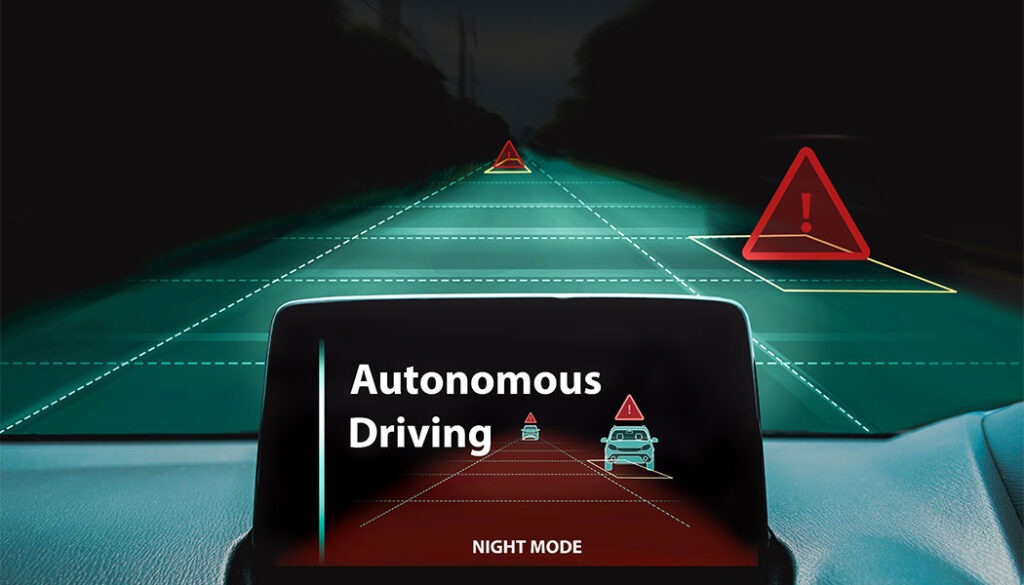
Despite the challenges, cameras remain a cornerstone of AV technology, enabling a range of crucial functions:
- Object Detection: Cameras identify pedestrians, vehicles, and other obstacles, forming the foundation of AV situational awareness. This capability is vital for ensuring both passenger safety and seamless traffic integration.
- Lane Tracking: High-precision imaging ensures accurate lane-keeping, even in complex road layouts. Advanced cameras can detect faded markings, curved roads, and changing lanes under challenging conditions.
- Obstacle Avoidance: Paired with AI algorithms, cameras enable AVs to predict and react to potential hazards. They work alongside other sensors to evaluate dynamic environments and make split-second decisions.
How GMSL2 Cameras Address AV Challenges
GMSL2 cameras are designed to address the various challenges faced by AVs, ensuring all the imaging needs are met.
High-Resolution Imaging with Minimal Latency
GMSL2 cameras support ultra-high-definition (4K) video feeds, delivering clear, sharp images at high frame rates. This is essential for AVs, where precision and clarity in visual data are paramount for accurate decision-making.
With GMSL2’s low-latency transmission, AV systems can process visual data nearly instantaneously, ensuring real-time responses to dynamic road or path conditions. This enables AVs to make real time decisions, such as braking or adjusting speed, when faced with potential hazards.
Robust Performance in Harsh Environments
Automotive and industrial environments are notorious for their noise and interference, which can compromise the performance of sensitive electronic components. GMSL2 cameras come equipped with robust electromagnetic interference (EMI) resistance from common automotive disturbances, such as engine vibrations and electromagnetic radiation from nearby components.
Moreover, GMSL2 cameras can transmit data over long cable runs, up to 15 meters. This feature is particularly valuable in applications requiring multiple cameras, such as surround-view systems, without compromising data quality or transmission distance.
Power Efficiency and Reliability
GMSL2 cameras use the Power-over-Coax (PoC) technology, which allows both data and power to be transmitted through a single cable. This eliminates the need for separate power lines. This, in turn, reduces the overall complexity of the wiring system and minimizes the risk of failure.
This design leads to reduced installation and maintenance costs, while simultaneously enhancing the system’s reliability. PoC is particularly valuable for AVs, where a high number of cameras and sensors are often required. It ensures a more streamlined and dependable camera setup.
Seamless Integration with ADAS
The real-time video feeds provided by GMSL2 cameras are critical for integrating with other advanced driver assistance systems (ADAS). Cameras can synchronize with radar, LiDAR, IMU, and GPS systems to create an accurate and comprehensive data set for vehicle navigation and situational awareness. This data fusion is essential for tasks like adaptive cruise control, lane-keeping assistance, and collision avoidance, where precise coordination between multiple sensors is key.
Autonomous Vehicles Where GMSL2 Cameras Are a Perfect Fit
GMSL2 cameras are highly versatile and can be integrated into various types of autonomous vehicles (AVs) and robotic systems such as:
Autonomous Transportation
Robotaxis and autonomous buggies are revolutionizing urban mobility, and GMSL2 cameras are key enablers of these advancements. These vehicles rely on high-resolution cameras to detect lanes, recognize pedestrians, and read traffic signs in real time.
With GMSL2’s ability to deliver high-quality, low-latency video feeds to long distances, autonomous transportation systems can make quick decisions, such as avoiding pedestrians or adjusting speeds at traffic signs, ensuring passenger safety and smooth operation.
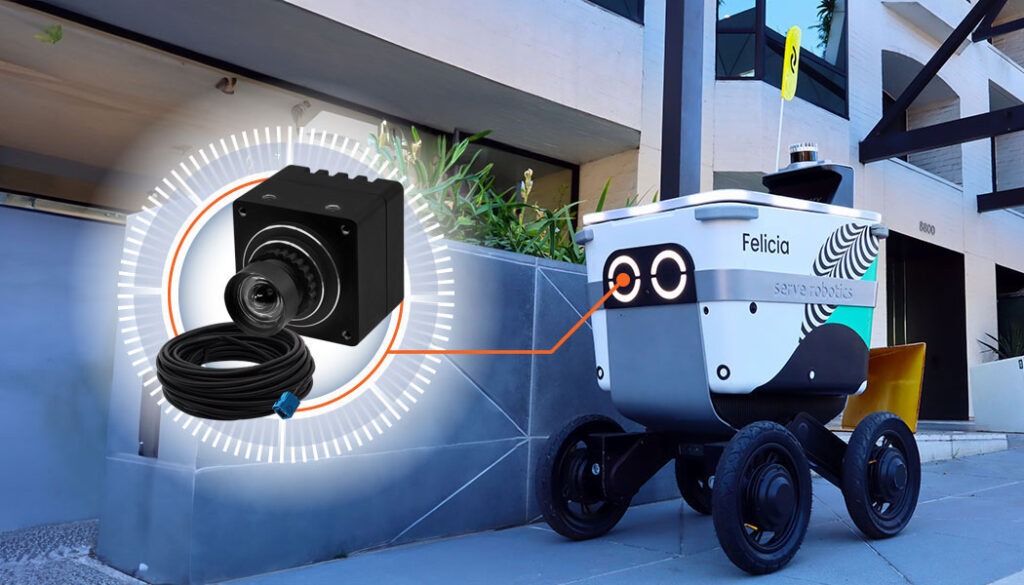
Autonomous Robots
Autonomous robots, including delivery robots, robotic arms, and telepresence robots, depend on high-bandwidth data streams to navigate their environments accurately. GMSL2’s large data throughput capability ensures that these robots can transmit high-definition imagery for precise environmental mapping and obstacle avoidance.
The robust signal integrity and long cable support make GMSL2 cameras ideal for applications where mobility and camera placement flexibility are crucial. For example, delivery systems or robotic arms working in manufacturing settings.
Autonomous Tractors
Autonomous tractors are becoming essential for smart farming activities. These vehicles require high-precision cameras for tasks like crop monitoring, plowing, spreading fertilizer, obstacle detection, and navigation in large fields. GMSL2 cameras support the heavy data demands of such systems, enabling seamless operation and accurate monitoring, even when the camera is placed up to a distance of 15 meters from the processor.
Automated Forklifts
Automated forklifts, which are used in warehouses and industrial settings, benefit from GMSL2 cameras for navigation, inventory scanning, and collision avoidance. These cameras help forklifts safely move heavy items in environments where precision is critical, such as in tight spaces or near other automated equipment. With GMSL2’s ability to handle high-bandwidth video feeds and operate over long distances, these robots can perform reliably in large, complex environments.
Automated Lawn Mowers
While most automated lawnmowers are compact, certain models with large size might require GMSL2 cameras. These cameras assist in obstacle detection and route planning over large areas, ensuring the mower stays within its designated path and avoids obstacles like garden furniture. Here too, it is features like high-bandwidth, long-distance transmission, and automotive-grade build that make GMSL2 cameras well-suited for the application.
Future of GMSL Cameras in Autonomous Vehicles
As autonomous vehicles continue to evolve, the role of GMSL cameras is expected to expand:
Technological Advancements
Looking ahead, GMSL cameras are likely to support even higher resolutions and faster frame rates to keep up with the increasing demands of Level 4 and Level 5 autonomy. This will enable AVs to process more data from their camera systems in real time, allowing for enhanced situational awareness and decision-making capabilities in complex environments. For instance, the GMSL3 interface, the latest in the GMSL family, supports a transfer rate of up to 12 Gbps.
Industry Adoption
GMSL cameras are seeing an increased adoption in automotive, industrial, and agricultural applications. These cameras are seen as a critical component for improving AV performance, safety, and overall reliability, making them indispensable for future AV designs.
Challenges to Address
Integrating GMSL cameras requires specialized engineering expertise. Since it uses the Serializer-deserializer method of data transmission, it is recommended to work with camera experts like TechNexion to incorporate them into your vision system.
Additionally, cost considerations will play a significant role in mass-market deployment. To ensure widespread adoption, manufacturers will need to focus on reducing production costs while maintaining the high-quality performance GMSL2 cameras offer.
Parting Thoughts
GMSL2 technology is a game-changer for high-performance camera systems, offering enhanced transmission capabilities, low latency, and robust error correction. As autonomous vehicles evolve, the demand for precise, real-time imaging solutions will only grow. GMSL2 cameras are ideally suited for this challenge, enabling seamless integration with the complex sensor suites required for full autonomy.
TechNexion is at the forefront of providing GMSL2 camera solutions specifically designed for the demanding needs of autonomous vehicles. Our cameras are engineered with high-resolution sensors, ensuring seamless, long-distance transmission, low latency, and real-time performance. Designed for complex AV systems, they offer reliable, high-performance imaging for enhanced situational awareness and safe navigation.
To learn more about how TechNexion’s GMSL2 cameras can enhance your autonomous vehicles, visit our product page.
Related Products
Get a Quote
Fill out the details below and one of our representatives will contact you shortly.

